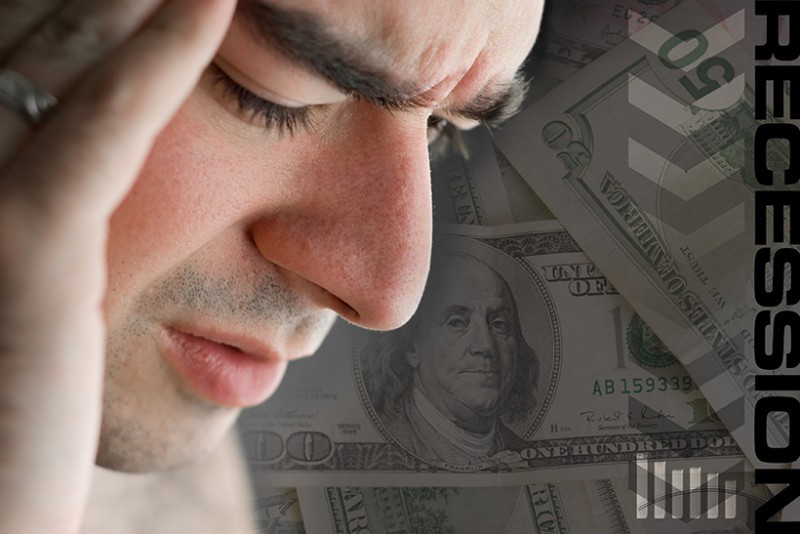Those of us who have never experienced an anxiety disorder might find it difficult to empathize with those who have suffered, some for almost their entire lives. Perhaps the doubters don't believe such disorders are for real or that the sufferer should just "suck it up and get over it." To those cynical about the genuine existence of anxiety disorders, you really don't want to walk a mile in the shoes of someone who has been diagnosed with one.
Anxiety disorders are very much for real, and this isn't just about feeling anxious every now and then or being temporarily stressed because of a problem at work, an upcoming exam or getting ready to speak in front of a group of people. An anxiety disorder is accompanied by a more intense and persistent fear, stress, worry, etc. that is significant enough to interfere with someone's ability to live a normal life.
For those so afflicted with such a disorder, which, by the way, is a serious mental illness, worry and fear can be constant companions, even overwhelming or disabling, per
webmd.com. Generally, for all anxiety disorders—which include panic disorder, social anxiety disorder, generalized anxiety disorder (GAD) and various phobias—the symptoms can include some or all of the following, in some cases mimicking a heart attack:
- Feelings of panic, fear or uneasiness
- Sleeping problems
- Cold, clammy hands or feet
- Shortness of breath
- Heart palpitations
- Dry mouth
- Numbness or tingling in hands or feet
- Nausea
- Muscle tension
- Dizziness
Other symptoms listed by the
National Alliance on Mental Illness (NAMI) include restlessness or irritability, anticipating the worst and being watchful for signs of danger, headaches and frequent urination or diarrhea.
Specific causes of anxiety disorders have yet to be identified, but health experts generally agree that leading factors are a genetic disposition (it runs in the family) and environmental issues related to trauma or a significant event. Personal weaknesses" or flaws" have been ruled out, as have poor upbringing.
The
Anxiety and Depression Association of America (ADAA) identifies several other types of anxiety disorders to include agoraphobia (when a person feels threatened in a certain environment with no apparent means of escape), selective mutism and separation anxiety. Whatever the disorder type, many suffer. In 2012, according to an article in
The Atlantic (a compelling 2014 first-person story authored by Scott Stossel), nearly 50 million prescriptions of just one antianxiety drug among many, known generically as Xanax, was prescribed for Americans. The good news in all this? Anxiety disorders are treatable.
Sufferers are far, far from being alone. According to the
National Institute of Mental Health (NIMH), 40 million American adults, or about one in six, suffer from some form of anxiety disorder at a given time. Treatment for those afflicted accounts for more than a fourth of all spending on mental-health care; that's even taking account that many sufferers never seek medical care, even if just to get a proper diagnosis.
The trick is knowing what is everyday anxiety vs. an actual anxiety disorder. The
ADAA on its website features a "Which Is It?" chart that compares various types of anxiety. The chart includes the following comparisons:
Anxiety Comparison Sample 1
- Everyday Anxiety: Worry about paying bills, landing a job, a romantic breakup, etc.
- Anxiety Disorder: Constant and unsubstantiated worry that causes significant distress and interferes with daily life.
Anxiety Comparison Sample 2
- Everyday Anxiety: A case of nerves or sweating before a big test, business presentation, stage performance, etc.
- Anxiety Disorder: Seemingly out-of-the-blue panic attacks and the preoccupation with the fear of having another one.
Anxiety Comparison Sample 3
- Everyday Anxiety: Anxiety, sadness or difficulty sleeping immediately after a traumatic event.
- Anxiety Disorder: Recurring nightmares, flashbacks or emotional numbing related to a traumatic event that occurred several months or years before.
So, what is a sufferer to do? A visit to his or her primary-care physician is a good place to start. The doctor can perform a thorough examination to determine what the condition
is not, eliminating possible conditions exhibiting similar symptoms (such as heart disease or hyperthyroidism). If no other medical illness is found, the doctor will likely then refer the patient to a psychiatrist, psychologist or another mental health professional qualified to diagnose and treat the mental illness.
Treatments, says
webmd.com, can include medication, psychotherapy, cognitive-behavioral therapy, dietary and lifestyle changes (
Note: the consumption of products containing caffeine could be causing the symptoms), and relaxation therapy.
Remember, anxiety sufferers, even those of you without a diagnosed mental illness, help is available and people do care. You are never alone.

